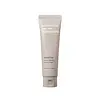What's inside
What's inside
 Key Ingredients
Key Ingredients

 Benefits
Benefits

 Concerns
Concerns

No concerns
 Ingredients Side-by-side
Ingredients Side-by-side

Water
Skin ConditioningKaolin
AbrasiveButylene Glycol
HumectantSilica
AbrasiveGlycerin
HumectantBentonite
AbsorbentCI 77891
Cosmetic Colorant1,2-Hexanediol
Skin ConditioningVolcanic Ash
AbrasiveMicrocrystalline Cellulose
AbsorbentOnsen-Sui
Xanthan Gum
EmulsifyingCellulose Gum
Emulsion StabilisingPropanediol
SolventDisodium EDTA
Ethylhexylglycerin
Skin ConditioningLactic Acid/Glycolic Acid Copolymer
Skin ConditioningGluconolactone
Skin ConditioningMadecassoside
AntioxidantLactic Acid
BufferingPolyquaternium-10
Tocopherol
AntioxidantWater, Kaolin, Butylene Glycol, Silica, Glycerin, Bentonite, CI 77891, 1,2-Hexanediol, Volcanic Ash, Microcrystalline Cellulose, Onsen-Sui, Xanthan Gum, Cellulose Gum, Propanediol, Disodium EDTA, Ethylhexylglycerin, Lactic Acid/Glycolic Acid Copolymer, Gluconolactone, Madecassoside, Lactic Acid, Polyquaternium-10, Tocopherol
 Reviews
Reviews

Ingredients Explained
These ingredients are found in both products.
Ingredients higher up in an ingredient list are typically present in a larger amount.
1,2-Hexanediol is a synthetic liquid and another multi-functional powerhouse.
It is a:
- Humectant, drawing moisture into the skin
- Emollient, helping to soften skin
- Solvent, dispersing and stabilizing formulas
- Preservative booster, enhancing the antimicrobial activity of other preservatives
Butylene Glycol (or BG) is used within cosmetic products for a few different reasons:
Overall, Butylene Glycol is a safe and well-rounded ingredient that works well with other ingredients.
Though this ingredient works well with most skin types, some people with sensitive skin may experience a reaction such as allergic rashes, closed comedones, or itchiness.
Learn more about Butylene GlycolGluconolactone is a PHA. PHAs are a great gentle alternative to traditional AHAs.
When applied, Gluconolactone has the same affect on skin as AHAs such as lactic acid. It helps dissolve the dead skin cells in the top layer of your skin. This improves texture and brightens the skin.
PHAs are more gentle than AHAs due to their larger structure. They do not penetrate as deeply as AHAs and take a longer time to dissolve dead cells. Studies show PHAs do not cause as much irritation.
Gluconolactone has some interesting properties:
In a 2004 study, Gluconolactone was found to prevent UV damage in mouse skin cells and has not been found to increase sun sensitivity. However, we still recommend wearing SPF daily.
This ingredient is is an created by reacting gluconic acid with an alcohol.
Learn more about GluconolactoneWater. It's the most common cosmetic ingredient of all. You'll usually see it at the top of ingredient lists, meaning that it makes up the largest part of the product.
So why is it so popular? Water most often acts as a solvent - this means that it helps dissolve other ingredients into the formulation.
You'll also recognize water as that liquid we all need to stay alive. If you see this, drink a glass of water. Stay hydrated!
Learn more about WaterXanthan gum is used as a stabilizer and thickener within cosmetic products. It helps give products a sticky, thick feeling - preventing them from being too runny.
On the technical side of things, xanthan gum is a polysaccharide - a combination consisting of multiple sugar molecules bonded together.
Xanthan gum is a pretty common and great ingredient. It is a natural, non-toxic, non-irritating ingredient that is also commonly used in food products.
Learn more about Xanthan Gum